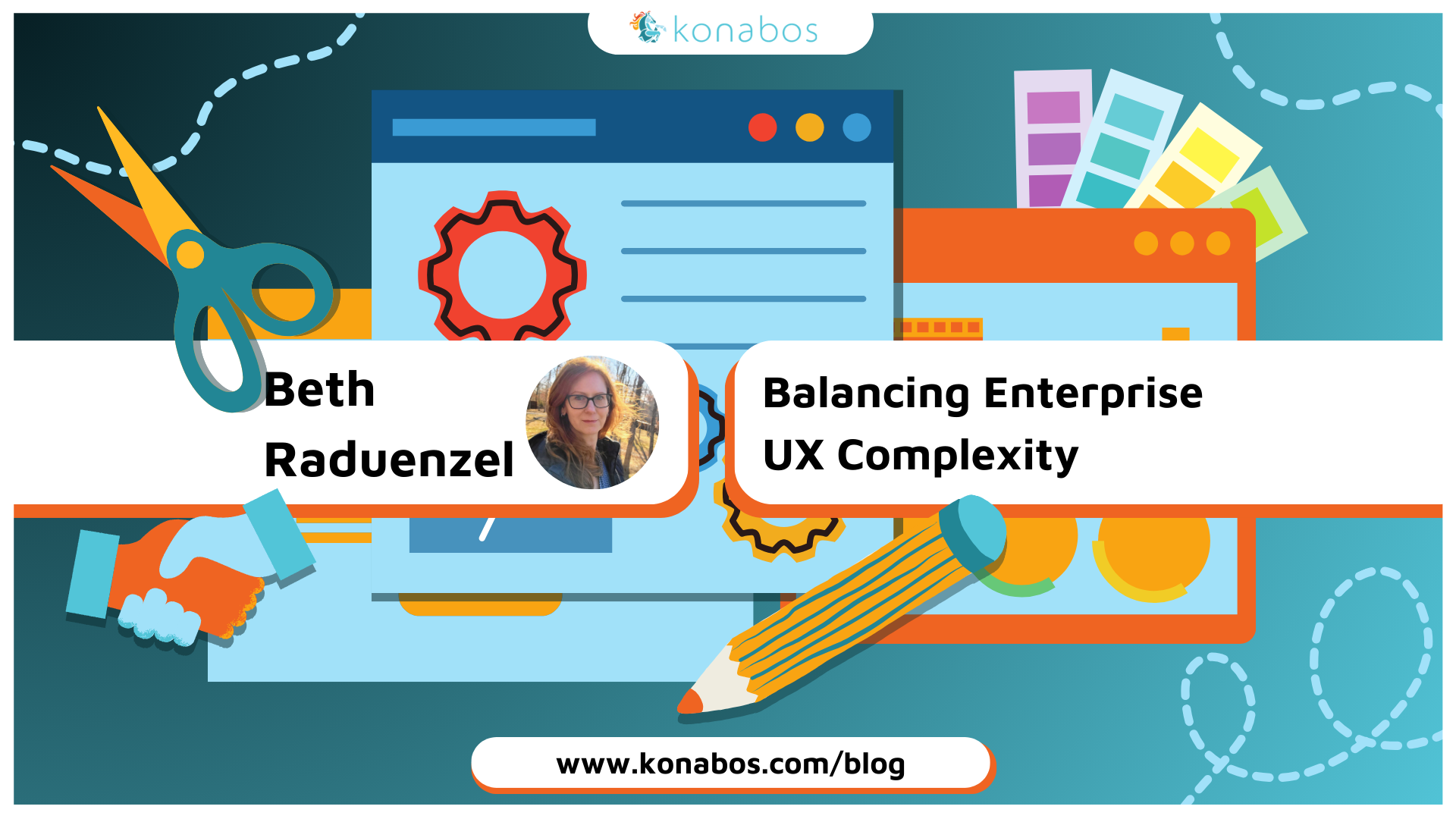Enterprise UX: Balancing Complexity and User-Friendliness
Beth Raduenzel -
26 Mar 2024
The challenges a user experience (UX) designer faces when creating enterprise products are unique and often intimidating. The intricacies of enterprise products, combined with diverse user needs, require solutions that thoughtfully balance complexity and user-friendliness. In this post, we’ll explore the unique challenges of designing user interfaces for sophisticated enterprise products and discuss ways to simplify the user experience without sacrificing functionality. We'll also discuss some real-life examples of enterprise UX designs that hit the mark.
Solving the Complexity Puzzle
Enterprise products commonly offer a substantial number of features, functionalities, and data points, that reflect the intricacies of modern businesses. Designers are challenged with presenting this complexity in an intuitive and user-friendly manner. The trick is striking a harmonious balance without overwhelming users with information and options.
Understanding User Personas and Workflows
- To find the right balance, it’s essential to have a deep understanding of the distinct user personas interacting with the enterprise product. By mapping out user workflows and identifying key pain points, designers can tailor the interface to meet the specific needs of different user groups.
Hierarchy and Information Architecture
- Establishing a clear hierarchy and logical information architecture is essential in managing complexity. Group related functionalities, prioritize important features, and apply intuitive navigation to guide users through the interface seamlessly. Successful enterprise UX design often relies on a thoughtfully planned hierarchy that aligns with the mental models of users.
Simplifying the User Experience
Complexity is inherent in enterprise products, but simplifying the user experience doesn’t necessarily mean removing features. It means presenting information in an easily digestible way that helps users quickly and intuitively understand the content without feeling overwhelmed or confused. Here are some strategies:
Progressive Disclosure
- Implementing progressive disclosure allows designers to reveal information gradually, based on user interactions and needs. This prevents overwhelming users with a flood of information all at once while ensuring that advanced features are still accessible when needed.
Contextual Help and Onboarding
- Provide contextual help and onboarding experiences to guide users through complex workflows. Tooltips, guided tours, and interactive tutorials educate users and empower them to make the most of the product without feeling lost.
Real-World Examples:
The following two enterprise products have been highly successful in maintaining the delicate balance between complexity and user-friendliness, delivering not only a great user experience but also a fully accessible one:
Slack
Slack is a team collaboration and messaging platform with a clean, intuitive interface, and a strong emphasis on user experience. Slack prioritizes simplicity, clarity, and functionality through a user-centric design approach that creates a positive and enjoyable experience for its users.
Google Workspace
Google is known for its simplicity and user-friendly designs. Google Workspace integrates various productivity tools such as Gmail, Google Drive, Docs, Sheets, Slides, and more into one unified platform. Its clean, minimalist design is consistent across all applications and platforms. This simplicity enhances user navigation and reduces visual clutter, which contributes to a well loved user experience.
Conclusion:
Designing for enterprise UX is a nuanced journey that requires a deep understanding of both the intricacies of the product and the diverse needs of users. By adopting user-centric strategies, embracing progressive disclosure, and drawing inspiration from successful examples like Slack and Google Workspace, designers can successfully simplify complexity and maximize user-friendliness. In doing so, they lay the foundation for a more intuitive, efficient, and ultimately successful enterprise user experience.

Beth Raduenzel
Working for large Fortune 100 and 500 companies and small tech startups has given Beth a range of rarely attained experience. Beth has enjoyed improving user experiences across B2B, B2C, and SaaS Enterprise apps, whether as part of a large design team or wearing many hats as the sole designer, researcher, and editor at small startups.
Beth is the author of two published articles on web accessibility and is currently working on a tactile children’s book for the blind.



Share on social media